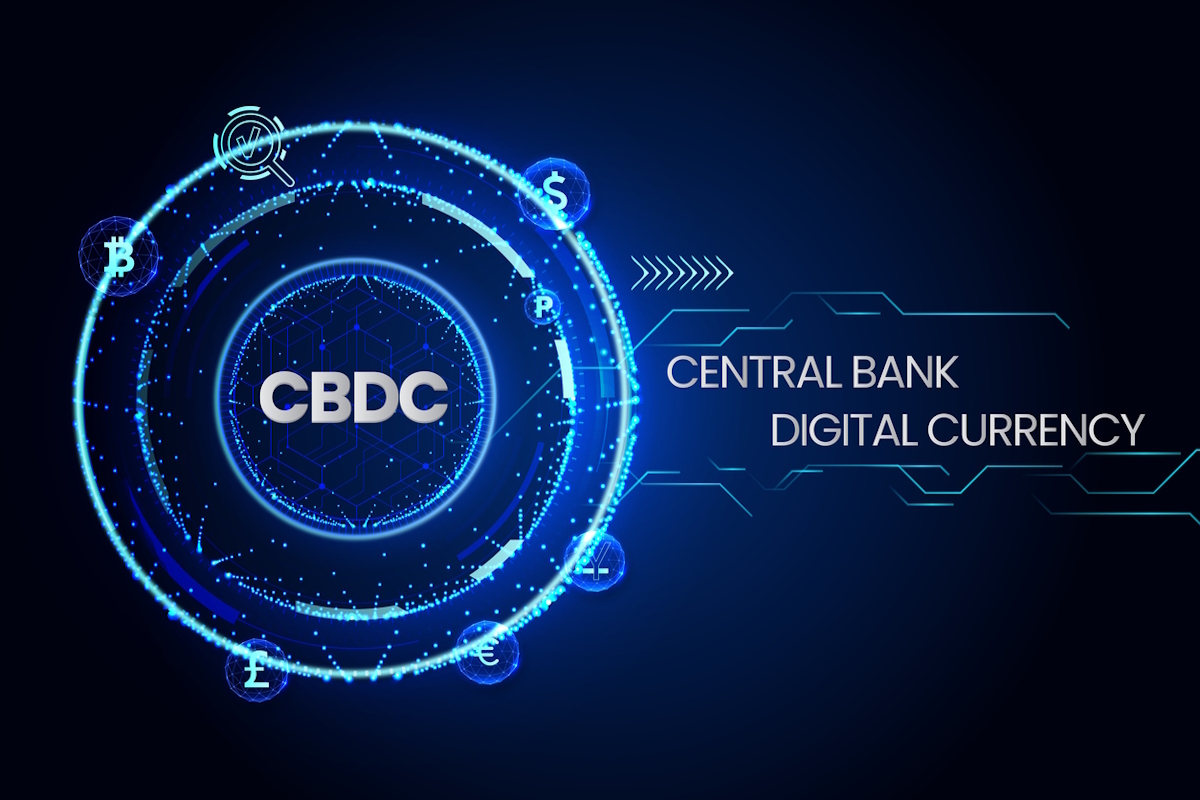Building a thriving CBDC ecosystem

Raoul-Thomas Herborg at Giesecke+Devrient explains the crucial alliance of public and private sectors in the central bank digital currencies ecosystem
Central bank digital currencies (CBDCs) are on the agendas of central banks around the world, and they can fundamentally transform business operations and even wider society. Today, 134 countries and currency unions, representing 98% of global GDP, are exploring a CBDC, and as of September 2024, there is a record high of 44 ongoing CBDC pilots underway. Meanwhile, the European Central Bank (ECB) has made significant strides towards the realisation of a digital euro.
There has been a prevailing notion that nations that have introduced CBDCs have experienced minimal usage. However, new research by US-based Atlantic Council think-tank shows a noticeable increase in adoption in recent months. This growing interest in CBDCs reflects their potential to complement cash as a public means of payment, while also serving as a catalyst for economic innovation.
As central banks explore the possibilities of CBDCs, the focus is on how a well-designed digital currency could shape the future financial system, enhance interoperability within the existing payment ecosystem and promote financial inclusion. Achieving these goals will require collaboration among public and private stakeholders, leveraging their respective strengths and clearly defining their business cases and the benefits of CBDC deployment.
An OMFIF report, published in partnership with Giesecke+Devrient, gathered the views of all the players that make up the CBDC ecosystem. It highlights the vast benefits for all participants and identifies the challenges they must overcome to unlock the full potential of CBDCs. Drawing on the findings, we examine the roles of key stakeholders throughout the ecosystem and the essential factors needed for CBDCs to thrive.
Stakeholders across the ecosystem
Of the many key players in the ecosystem, or wider network of organisations, central banks are the driving force behind CBDCs and hold a unique ability to foster innovation, providing the core platform and devising the regulatory framework. They essentially act as the primary stakeholders and the responsibility rests with them to issue the currency itself and provide a secure and resilient CBDC platform.
But central banks cannot do it alone - collaboration with the private sector is essential. Intermediaries such as financial and payment service providers, commercial banks and fintech companies have a key role in distributing CBDC and executing payments, undertaking compliance checks and providing digital wallets to users. The private sector will be the customer-facing party for any CBDC.
Technology providers will support central banks in developing the core CBDC infrastructure– a process that should ensure the safety, resilience, security, and scalability of CBDC networks. Additionally, they will enable new capabilities such as offline payments and interoperability between payment systems, including cross-border transactions. Offline payments ensure transaction continuity in areas with limited or unreliable internet connectivity, thereby enhancing financial inclusion and resilience in the payment ecosystem. CBDCs hold significant potential to enhance cross-border payments by reducing costs and eliminating various operational inefficiencies.
Governments, regulatory bodies and other public entities have the pivotal role of updating and enforcing legal frameworks as CBDCs are introduced, which may include updated anti-money laundering (AML) and Know Your Customer (KYC) requirements.
Alongside this, merchants, industry, and the real economy function as the enablers of transactions, whether online or offline, and will play a key role by embracing CBDC. Last, but certainly highly important, is the public: their trust in CBDC is key to ensuring its viability. Reduced transaction costs, enhanced security, online/offline capabilities, improved efficiency and ease of use are the prerequisites to ensure uptake and acceptance.
What a CBDC ecosystem provides
A CBDC ecosystem offers a transformative platform that reshapes the financial landscape by enhancing innovation, efficiency, security, and inclusivity in the digital economy. Among its many benefits, the report highlights five key areas where CBDCs will have a significant impact as stated by all stakeholders.
One of the primary benefits provided by a CBDC ecosystem is the enablement of programmable payments. This feature allows custom logic to be attached to transactions, enabling automatic execution based on predefined conditions or smart contracts. Such programmability enhances convenience, reduces errors, and improves efficiency and security in financial transactions.
Enhanced security and financial inclusion are also significant offerings of a CBDC ecosystem. With robust encryption and data integrity measures, CBDCs offer high levels of transaction security. When combined with modern digital identity protocols, they can streamline know-your-customer processes, making it easier for individuals without traditional identification to access financial services.
The ecosystem also addresses the need for offline payments, crucial for inclusion in areas with limited internet connectivity. By incorporating offline functionality for authorising transactions, CBDCs ensure that digital payments are accessible to all segments of the population.
Moreover, CBDCs facilitate efficient digital asset settlement by providing a secure means of reflecting ownership and settling digital assets using central bank money. This supports the growing digital token economy and automates complex financial processes.
Lastly, a CBDC ecosystem significantly improves cross-border payments by reducing costs and operational inefficiencies, thereby enhancing international trade and benefiting multinational corporations and consumers alike.
Building the CBDC ecosystem
Building a successful CBDC ecosystem requires careful consideration of various aspects to move from concept to reality. A key focus is the technical and design aspects, such as offline functionality, integrating CBDCs with existing payment infrastructures, rigorous testing to ensure adaptability and scalability, and designing applications that facilitate cross-border transactions.
To ensure complete engagement within a CBDC ecosystem, it is essential to provide appropriate incentives to financial and payment service providers and merchants. Each ecosystem member will have different goals for participating - and collaboration among members is necessary to ensure that they are aligned. Additionally, effective communication of the advantages of CBDCs to business users and the general public is crucial for achieving widespread and successful adoption.
Large-scale pilots are instrumental in demonstrating the practical benefits of CBDCs, which can encourage ecosystem members towards deployment. Pilots have already taken place in countries such as Ghana and Thailand to showcase the benefits of offline payments, interoperability with existing payment systems and greater access to diverse financial services. These projects highlight the comprehensive solutions available which support the needs of consumers, central banks, and commercial stakeholders in a unified approach to CBDC deployment.
The route forward
The true potential CBDCs possess in transforming the financial landscape and driving economic growth can only be realised through a unified effort from every participant in the ecosystem. While central banks will take the lead in developing a secure and resilient platform, the contributions of financial and payment service providers, technology developers, regulatory bodies and merchants are equally critical in shaping effective processes and services.
Technical and design considerations, clear communication strategies, and well-structured incentives are all essential components of this initiative. Stakeholders must collaborate closely to ensure alignment in objectives and strategies. Securing the trust and engagement of citizens is equally important, as addressing their concerns about privacy, cost, and efficiency will be key to fostering widespread adoption.
Ultimately, every participant within the CBDC ecosystem stands to gain from its successful implementation. A well-coordinated and robust ecosystem will be the foundation stone of a successful CBDC deployment, enabling the full realisation of its benefits.
Raoul-Thomas Herborg is Managing Director CBDC at Giesecke+Devrient
Main image courtesy of iStockPhoto.com and bymuratdeniz

Business Reporter Team
Most Viewed
Winston House, 3rd Floor, Units 306-309, 2-4 Dollis Park, London, N3 1HF
23-29 Hendon Lane, London, N3 1RT
020 8349 4363
© 2025, Lyonsdown Limited. Business Reporter® is a registered trademark of Lyonsdown Ltd. VAT registration number: 830519543





